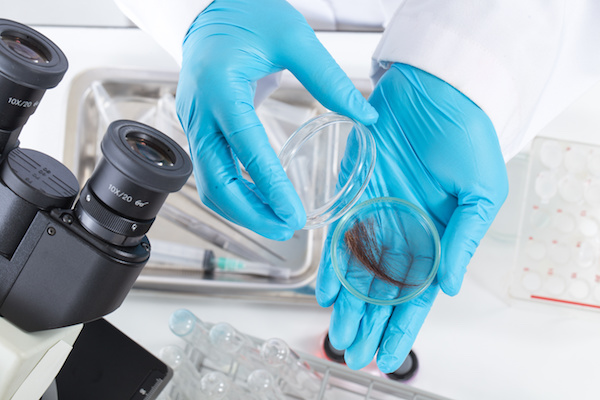While urine testing is the most common method for workplace drug testing, hair testing is regarded by many as the best indicator for repeated drug use. Hair testing allows for a much larger “detection window” of up to 90 days unlike urine, which helps eliminate the possibility of testers simply abstaining from drugs for several days prior to being tested.
Here are a couple frequently asked questions we receive about hair testing and their answers.
What is hair testing?
Hair testing is a drug screening method that uses hair instead of urine or saliva to screen for presence of drug abuse. Hair testing is the only drug testing method that provides up to a 90-day history, allowing testers to screen for repetitive drug use. When compared with urine testing, hair testing tends to provide a greater number of positives due to its longer detection window. Hair testing requires a small sample of hair that is collected under direct supervision without any invasion of privacy.
What drugs can Blueline Services test for with hair?
Blueline Services’s 5-panel hair test can detect cocaine, marijuana, opiates (codeine, morphine & 6-acetylmorphine,), amphetamines (amphetamine, methamphetamine, MDMA, MDA), and phencyclidine (PCP). Blueline Services’s Extended Opiates panel adds oxycodone, oxymorphone, hydrocodone, and hydromorphone
How effective is hair testing in detecting drug users?
Labs regularly report finding five times as many users compared to laboratory based urine testing programs.
What time period does hair testing cover?
The typical length of head hair tested is 1½ inches from the root end. Since the average growth rate of human head hair is approximately ½ inch (1.3 cm) per month a hair analysis covers an approximate 90-day time frame. This time frame is an approximation only since an individual’s actual hair growth rate may vary from the average.
Does body hair give the same type of results as head hair?
Body hair can be used for testing. However, while body hair is generally acknowledged as representing a more distant time frame than head hair, the approximate time period cannot be identified due to the high variability of growth rates.
How soon after use can a drug be detected in hair?
It takes approximately 5-10 days from the time of drug use for the hair containing drug to grow above the scalp where it can be collected.
What is the turnaround time?
Hair testing results can usually be returned within 2-3 business days.
Does the laboratory wash the hair prior to analysis?
All hair specimens are washed prior to confirmation testing to remove possible external contamination.
Can external exposure to drugs (marijuana smoke, crack smoke, etc.) have an effect on the hair test results?
Along with a wash procedure, Laboratories looks for both the parent drug and metabolite (by-product) of drug usage (where appropriate). For marijuana analysis, Labs detects only the metabolite (THC-COOH). This metabolite is only produced by the body and cannot be an environmental contaminant.
Can a hair test be beaten/adulterated?
Currently there are no known successful commercial adulterants for hair tests and the recommended use of normal hair care products/procedures (shampoos, dyes, permanents, relaxers, bleaches) do not have a significant effect on results.
Do you pull the hair out of the scalp to examine the follicle?
No. Testing a hair follicle would require a painful collection process. Hair testing requires the smallest sample in the industry, snipping above the scalp. No hair is “pulled” out of the scalp, and the hair follicle is not disturbed. Sample collection is a completely painless, quick procedure
How does hair analysis compare to urinalysis?
The primary difference is the wider window of detection with hair. Cocaine, methamphetamine, opiates, and PCP are rapidly excreted and usually undetectable in urine 72 hours after use. Rather than the hours or days covered by a body fluid test, a hair test covers a period of months, ensuring that a drug user cannot evade the test by simply abstaining for a few days. Additional advantages include non-intrusive collection procedures, virtual elimination of test evasion through substitution or adulteration, and greater accuracy through test repetition capability. The combination of an increased window of detection and resistance to evasion makes hair testing far more effective than urinalysis in correctly identifying drug users.
How sensitive is hair testing in detecting drug users?
Comparison studies have proven that hair testing is up to 6-10 times more effective in identifying drug users than urinalysis. In other words, 85% of the drug users identified by a hair test could get through a urine screen and enter the workforce.
Can hair drug tests be run on people with little or no hair?
Yes. Hair can be collected from several locations on the head and combined to obtain the required amount of hair. If head hair is not available, certain body hair can be used as an alternative.
Can hair testing be used for the U.S. Department of Transportation (DOT) testing?
No, the U.S. Department of Transportation has not approved hair testing at this time.
